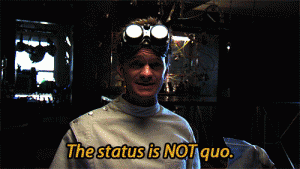I’ve been putting off writing this post, and it’s probably because it’s hard to say goodbye. I hope that readers don’t mind the diaristic style of this last post from me, and I hope that my fellow graduates feel it speaks to their experience as well.
Three days ago, I officially graduated with a Master’s in History and Museum Studies. After listening to the various commencement speeches about what it means to be a Jumbo and how elephants always remember places they’ve been, my mom asked me whether Tufts feels like “my school” now, or whether I feel a stronger connection to my undergrad alma mater. Looking around the green, I realized I don’t feel a very strong connection to Tufts University as a whole, although I’m proud to have been a part of it. What I do feel is a strong connection to the individual pieces of Tufts that made up my experience.
I feel that Tufts Museum Studies Program and the History Department are “my school.” I feel a connection to the Education and Art History departments, too, because of my close working relationships with the faculty and students there. I feel that Tisch is “my” library, and East is “my” academic building. These are the institutions, and pieces of institutions, I feel faithful to, and I will have fond memories of. So yes, Tufts is my school, even though as a grad student and a commuter with a day job, it took me almost two years to figure out what Dewick is,* and I never figured out where it is. I think that ten years from now if someone asks me “did you go to Tufts?” I’ll say, “not just Tufts — Tufts Museum Studies.”
It’s a very exciting time in my life, because I am also in a job transition; soon I will be starting a job at the Paul S. Russell, MD Museum of History and Innovation at Massachusetts General Hospital. I absolutely have my Tufts education to thank for helping me become qualified for this new stage in my career. A good professional program isn’t just about helping students launch their careers, it’s really about preparing them to be good at their jobs, and I am both hopeful and confident that Tufts has done that for me.
From September 2013 through March 2015, I wrote a monthly-ish column for this blog called “The Wider World,” which discussed ways that we as students could explore the relationship between museums and their wider communities, even while we were in our school bubble. Now I’m leaving the bubble, and I plan to continue to reflect on this relationship. I hope that you will join me.
I’m pleased to announce that two museum studies students will be taking over the blog from me, Colleen Sutherland and Jess Camhi. Even if you don’t already know them, you may have seen their exhibits in the Koppelman Gallery as part of “Focus: Experiments in Photographic Interpretation” this past month. I am excited to be passing the baton into their capable hands.
Over and out (on this channel),
Tegan
*Dewick is a dining hall.

!["He's an expert at the art of small talking." [In very small letters:] "Very nice weather we have today."](https://sites.tufts.edu/museumstudents/files/2014/12/small-talk-300x197.jpg)